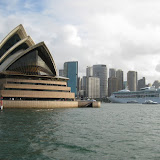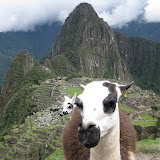Quick tip for today. If you looked at this picture and immediately thought of the number two, congrats, you don't need to read this post. The rest of you, pay attention.
Back when he was president of the USA, George Bush Sr. visited Australia. From his caravan, he waved, saluted, and gave what he thought was the victory sign. The next day, all the local papers published the headlines "American President Insults Australian Public."
Huh?
You see, in many countries, holding up your index and middle finger to make a V sign with the back of your hand facing away from you does not mean "victory" or "peace." It means "up yours." In fact in a couple countries in Europe, it doesn't matter which way your hand is facing, it's still an insult.
But you'd never do a silly thing like that, would you? Well, actually, you might. most Americans learn to count on their hands starting with their index finger, not using their thumb until they get to the number five. Try this and stop at the number two. See what I mean?
This is how, if you're not thinking about it, you're going to try to order two of something at a European or Aussie bar or restaurant and royally piss off your server. This isn't universal, just look at any photo that includes a Japanese (or Chinese or Korean) tourist. But it's an easy mistake to avoid.
So, while abroad, especially in Europe, Oz, and NZ, get in the habit of counting starting with your thumb (or, if you're weird like me, your pinky). After a while, it'll be as natural as measuring temperature in centigrade and using the metric system.
While we're on the subject of gestures, other obvious ones to avoid (or use, when the situation calls for it) are poking your forehead with your index finger or thumb, scratching under your chin with the back of your hand facing away from you, and of course the near-universal middle finger (with or without thumb-- you guys can argue that one along with your soda vs. pop debates, I need no part in the fight).
Beyond that, take a glance at what a guidebook says about gestures in your destination country. You'll learn how the finger wag North Americans use to tell their kids they've been bad simply means "no" in Latin America, and that nodding your head up and down in Bulgaria does as well. You might even be able to decipher the infamous Indian head wobble. If you do, let me know. None of the 25 students I was with or our (Indian-born) Hindi teacher could ever figure it out.
Back when he was president of the USA, George Bush Sr. visited Australia. From his caravan, he waved, saluted, and gave what he thought was the victory sign. The next day, all the local papers published the headlines "American President Insults Australian Public."
Huh?
You see, in many countries, holding up your index and middle finger to make a V sign with the back of your hand facing away from you does not mean "victory" or "peace." It means "up yours." In fact in a couple countries in Europe, it doesn't matter which way your hand is facing, it's still an insult.
But you'd never do a silly thing like that, would you? Well, actually, you might. most Americans learn to count on their hands starting with their index finger, not using their thumb until they get to the number five. Try this and stop at the number two. See what I mean?
This is how, if you're not thinking about it, you're going to try to order two of something at a European or Aussie bar or restaurant and royally piss off your server. This isn't universal, just look at any photo that includes a Japanese (or Chinese or Korean) tourist. But it's an easy mistake to avoid.
So, while abroad, especially in Europe, Oz, and NZ, get in the habit of counting starting with your thumb (or, if you're weird like me, your pinky). After a while, it'll be as natural as measuring temperature in centigrade and using the metric system.
While we're on the subject of gestures, other obvious ones to avoid (or use, when the situation calls for it) are poking your forehead with your index finger or thumb, scratching under your chin with the back of your hand facing away from you, and of course the near-universal middle finger (with or without thumb-- you guys can argue that one along with your soda vs. pop debates, I need no part in the fight).
Beyond that, take a glance at what a guidebook says about gestures in your destination country. You'll learn how the finger wag North Americans use to tell their kids they've been bad simply means "no" in Latin America, and that nodding your head up and down in Bulgaria does as well. You might even be able to decipher the infamous Indian head wobble. If you do, let me know. None of the 25 students I was with or our (Indian-born) Hindi teacher could ever figure it out.









Amusingly, the first thing I thought with the one you're showing was "up yours," because that's the Medieval/Renaissance England hand symbol for, well, "up yours." Not sure if it's still around, I never did it in England. I think starting on your pinkie is the best bet.
ReplyDeleteI'm Chinese born, so the first thing I thought was "seven"! After getting to five and moving beyond the realm of one hand, Chinese people everywhere understand that the 'aloha' symbol (without the hand wagging) is "six"; seven is the symbol you've pictured; eight is seven with your middle finger extended alongside the index; nine involves trying to touch the tip of your index finger to the second knuckle (impossible, so our hand in profile just looks like a curved nine) while your other fingers, thumb included, are balled into a fist. Ten is making a cross with your two index fingers.
ReplyDeleteBy the way, this also means that all Chinese people signal numbers one through five by starting with index fingers, just like Americans do. (otherwise two would mistakenly be interpreted as seven!). The only nuance is that three is the three middle fingers and doesn't involve the pinky... usually, but that doesn't really matter. I'm not sure why three looks that way; it could be that Chinese people are still cheesy enough to be doing the "OK" symbol to each other!
-Viv
Count C- Good to know. The British couple I've spent the last half a week with haven't made any comment about my using thumb and forefinger to mean "two," but that might be because they've traveled a lot more than most people. I'll keep that in mind next time I end up at a ren fair or something.
ReplyDeleteViv- Hang on, what part of China are you from? I was taught that seven was your thumb, index finger and middle finger pinched together and that the number I pictured above was eight! Maybe I just was getting it wrong every time and people just paid attention to what I was saying instead of what I was signing (for some reason the number eight was really easy for me to remember).
I'm Shanghainese, but I wonder if this is a regional variation at all. I know that touching the tips of your TIM fingers is also seven, but I've never seen eight done with the spread TI fingers. (That said, I can easily see why that would be the symbol for eight! In Chinese, eight is represented by what looks like a mustache, so if you point your fingers downward, it certainly LOOKS like a Chinese eight.)
ReplyDeleteAt best, the seven and eight can be represented by the same symbol, so maybe the perfect system would involve using the seven you mention and the eight I talked about.
What about hitchhiking? In Fiji if you want a ride you extend your arm, palm down, and wiggle your hand.
ReplyDeleteWow. That's a nice piece of info.
ReplyDeleteAnd, thanks a lot for dropping by and commenting at my blog. Do drop in often. Would love your visits and comments and followups. Do visit Incredible India too!! :)
My Travelogue
Actually, it was a Brit who informed me of the history of the insult of the V sign with the back of your hand away from you. It comes from ancient bow and arrow warfare; the archers would use that symbol as a form of mockery towards the enemy if they were unable to shoot back since one pulls an arrow using the index and middle fingers.
ReplyDeleteViv- Yeah I didn't learn the gestures for numbers until I was in Beijing, so it could be regional, but like I said, there's a good chance I've gotten something backwards. I don't remember anyone ever holding the fingers down to look like a mustache...
ReplyDeleteCatherine- Yeah hitchhiking gestures is a whole other topic. Fun stories about learning that the hard way in New Zealand. I just figured I'd concentrate on the V symbol for this post.
Bhushavali- Well, thank you for dropping by mine! I'd love to go back to India someday, especially to the north which I haven't seen at all. We'll see.
Emily- Interesting-- kind of like the explanation I got of why the English drive on the left: knights would stay to the left while jousting so that they could hold their lance in their right hand. Not sure if it's true, but it sounds plausible. Makes you wonder if that means all brits somewhere deep down think they're jousting with oncoming traffic, I'm sure a lot of them would use that to explain London traffic (and maybe rounadabouts).